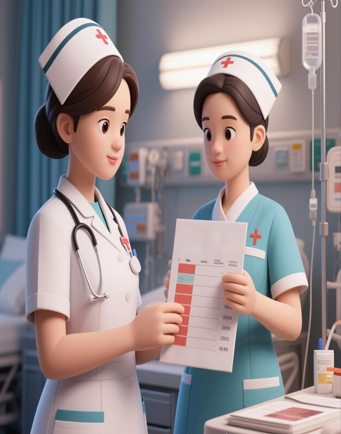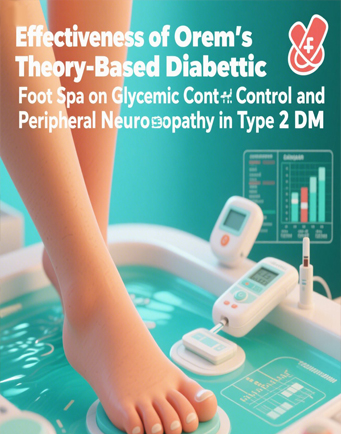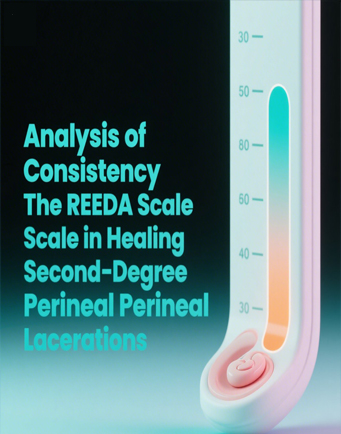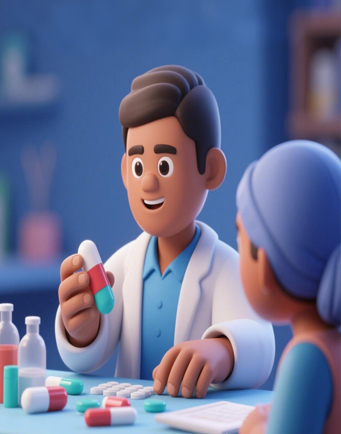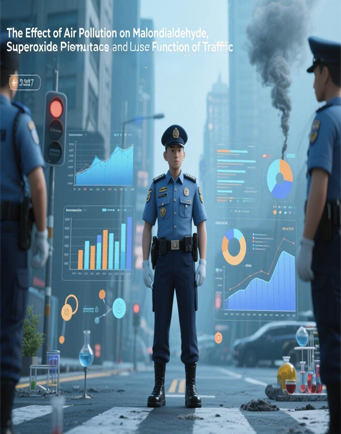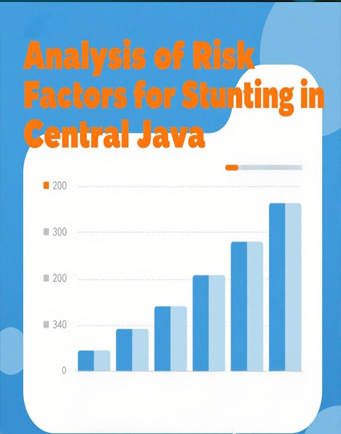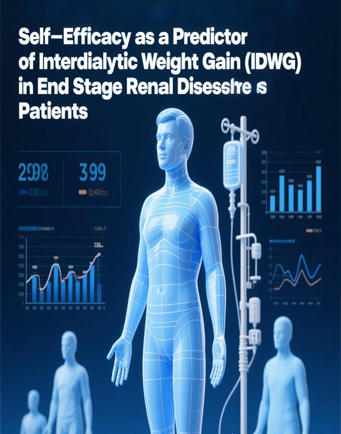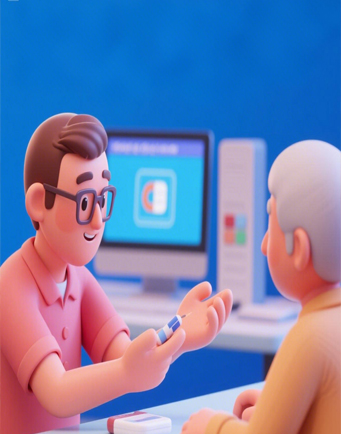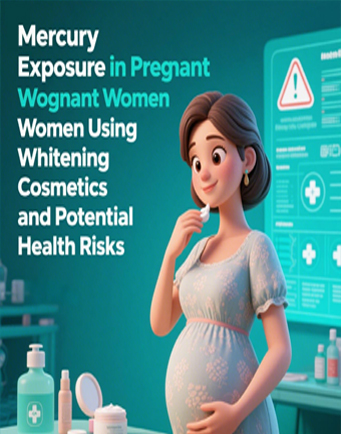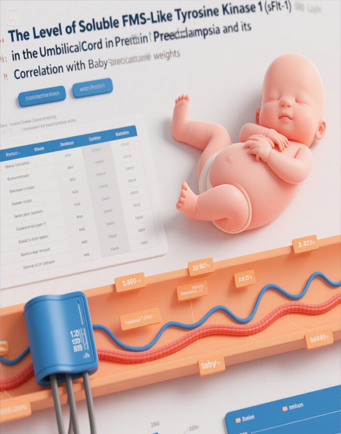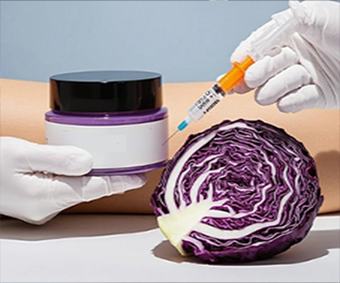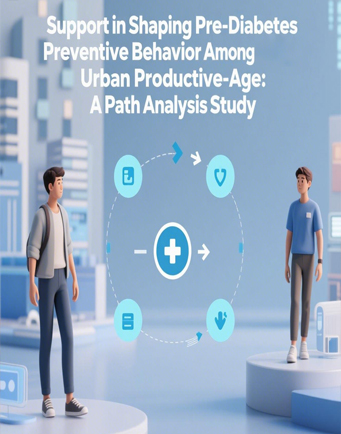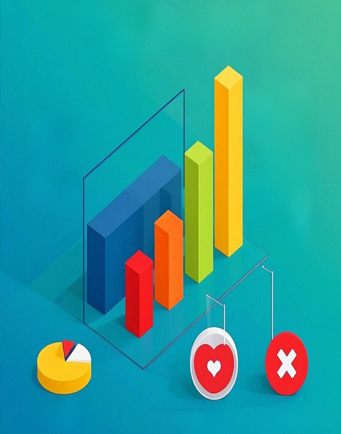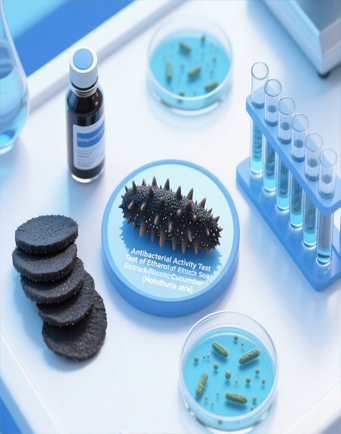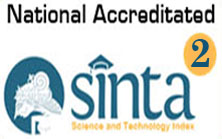Phytochemical Composition, Antioxidant Activity, and Bioactive Compound Profiling of Sargassum sp. Ethanol Extract: Potential for Antimalarial Application

Downloads
Sargassum sp., a brown macroalga abundant in Indonesia's coastal ecosystems, has garnered attention for its diverse bioactive compounds with pharmacological potential. However, its application as a natural antimalarial and antioxidant agent remains underexplored. This study aimed to investigate the secondary metabolites in ethanol extracts of Sargassum sp. and evaluate their antioxidant and potential antimalarial activities. Ethanol extraction was conducted using the maceration technique, followed by phytochemical screening, FT-IR, and GC-MS analyses to characterize the extract. The results revealed the presence of saponins, terpenoids, tannins, alkaloids, and flavonoids. FT-IR and GC-MS confirmed compounds associated with antioxidant and antimalarial properties. The extract exhibited notable antioxidant activity with an IC₅₀ value of 26.16 ppm. These findings highlight the potential of ethanol-extracted Sargassum sp. as a promising source for the development of safer, resistance-limiting antimalarial and antioxidant agents.
Achi, N., & Ohaeri, O. (2015). GC-MS Determination of Bioactive Constituents of the Methanolic Fractions of Cnidoscolus aconitifolius. British Journal of Pharmaceutical Research, 5(3), 163–172. https://doi.org/10.9734/bjpr/2015/13893
Adderley, A., Wallace, S., Stubbs, D., Bowen-O’Connor, C., Ferguson, J., Watson, C., & Gustave, W. (2023). Sargassum sp. as a biofertilizer: Is it really a key towards sustainable agriculture for The Bahamas? Bulletin of the National Research Centre, 47(1), 112. https://doi.org/10.1186/s42269-023-01087-w
Alfaridz, F., & Amalia, R. (2018). Review jurnal: Klasifikasi dan Aktivitas Farmakologi dari Senyawa Aktif Flavonoid. Farmaka, 16(2), 1–9. https://doi.org/10.24198/jf.v16i3.17283
Aranda-Ledesma, N. E., Aguilar-Zárate, P., Bautista-Hernández, I., Rojas, R., Robledo-Jiménez, C. L., & Martínez-Ávila, G. C. G. (2024). The Optimization of Ultrasound-Assisted Extraction for Bioactive Compounds from Flourensia cernua and Jatropha dioica and the Evaluation of Their Functional Properties. Horticulturae, 10(7), 709. https://doi.org/10.3390/horticulturae10070709
Attemene, S. D. D., Beourou, S., Tuo, K., Gnondjui, A. A., Konate, A., Toure, A. O., Kati-Coulibaly, S., & Djaman, J. A. (2018). Antiplasmodial activity of two medicinal plants against clinical isolates of Plasmodium falciparum and Plasmodium berghei infected mice. Journal of Parasitic Diseases: Official Organ of the Indian Society for Parasitology, 42(1), 68–76. https://doi.org/10.1007/s12639-017-0966-7
Azmir, J., Zaidul, I. S. M., Rahman, M. M., Sharif, K. M., Mohamed, A., Sahena, F., Jahurul, M. H. A., Ghafoor, K., Norulaini, N. A. N., & Omar, A. K. M. (2013). Techniques for extraction of bioactive compounds from plant materials: A review. Journal of Food Engineering, 117(4), 426–436. https://doi.org/10.1016/j.jfoodeng.2013.01.014
Bankova, V. S., Popov, S. S., & Marekov, N. L. (1983). A Study on Flavonoids of Propolis. Journal of Natural Products, 46(4), 471–474. https://doi.org/10.1021/np50028a007
Ben Mamoun, C., Prigge, S. T., & Vial, H. (2010). Targeting the lipid metabolic pathways for the treatment of malaria. Drug Development Research, 71(1), 44–55. https://doi.org/10.1002/ddr.20347
Carballeira, N. M. (2008). New advances in fatty acids as antimalarial, antimycobacterial and antifungal agents. Progress in Lipid Research, 47(1), 50–61. https://doi.org/10.1016/j.plipres.2007.10.002
Diachanty, S., Nurjanah, N., & Abdullah, A. (2017). Antioxidant Activities of Various Brown Seaweeds from Seribu Islands. Jurnal Pengolahan Hasil Perikanan Indonesia, 20(2), 305. https://doi.org/10.17844/jphpi.v20i2.18013
Dolganyuk, V., Belova, D., Babich, O., Prosekov, A., Ivanova, S., Katserov, D., Patyukov, N., & Sukhikh, S. (2020). Microalgae: A Promising Source of Valuable Bioproducts. Biomolecules, 10(8), 1153. https://doi.org/10.3390/biom10081153
Dunky, M. (2023). Naturally‐Based Adhesives for Wood and Wood‐Based Panels. Biobased Adhesives: Sources, Characteristics and Applications, 517-578. https://doi.org/10.1002/9781394175406.ch19
El-Beltagi, H. S., Mohamed, A. A., Mohamed, H. I., Ramadan, K. M. A., Barqawi, A. A., & Mansour, A. T. (2022). Phytochemical and Potential Properties of Seaweeds and Their Recent Applications: A Review. Marine Drugs, 20(6), 342. https://doi.org/10.3390/md20060342
Fatmawati, N., Anggreini, N., Saputri, R. D., Tjahjandarie, T. S., & Tanjung, M. (2018). Aktivitas Antimalaria Senyawa Flavanon Terisoprenilasi Dari Kulit Batang Erythrina fusca L. Jurnal Pharmascience, 5(1), 55 - 62. https://doi.org/10.20527/jps.v5i1.5786
Gnayem, N., Unis, R., Gnaim, R., Israel, Á., Gnaim, J., & Golberg, A. (2025). Fatty Acid Profile in Field-Collected Seaweed, Lipid Extraction Optimization, and Food Functional Properties. Life, 15(5), 710. https://doi.org/10.3390/life15050710
Kadam, S. U., Tiwari, B. K., & O’Donnell, C. P. (2015). Extraction, structure and biofunctional activities of laminarin from brown algae. International Journal of Food Science & Technology, 50(1), 24–31. https://doi.org/10.1111/ijfs.12692
Kaur, K., Jain, M., Kaur, T., & Jain, R. (2009). Antimalarials from nature. Bioorganic & Medicinal Chemistry, 17(9), 3229–3256. https://doi.org/10.1016/j.bmc.2009.02.050
Lopes, D., Rey, F., Leal, M. C., Lillebø, A. I., Calado, R., & Domingues, M. R. (2021). Bioactivities of Lipid Extracts and Complex Lipids from Seaweeds: Current Knowledge and Future Prospects. Marine Drugs, 19(12), 686. https://doi.org/10.3390/md19120686
Manteu, S. H., Nurjanah, N., & Nurhayati, T. (2018). Characteristics of Brown Seaweeds Sargassum policystum and Padina minor from Pohuwato Water, Gorontalo. Jurnal Pengolahan Hasil Perikanan Indonesia, 21(3), 296. https://doi.org/10.17844/jphpi.v21i3.24709
Marliana, E., Saleh, C., & Hendra, M. (2018). Antioxidant and Antimalarial Activities of Phenolic Compounds from Leaves of Macaranga beccariana Merr. JURNAL KIMIA MULAWARMAN, 15(2), 106. https://doi.org/10.30872/jkm.v15i2.611
Matsue, M., Mori, Y., Nagase, S., Sugiyama, Y., Hirano, R., Ogai, K., Ogura, K., Kurihara, S., & Okamoto, S. (2019). Measuring the Antimicrobial Activity of Lauric Acid against Various Bacteria in Human Gut Microbiota Using a New Method. Cell Transplantation, 28(12), 1528–1541. https://doi.org/10.1177/0963689719881366
Mead, J. R., & McNair, N. (2006). Antiparasitic activity of flavonoids and isoflavones against Cryptosporidium parvum and Encephalitozoon intestinalis. FEMS Microbiology Letters, 259(1), 153–157. https://doi.org/10.1111/j.1574-6968.2006.00263.x
Menaa, F., Wijesinghe, U., Thiripuranathar, G., Althobaiti, N. A., Albalawi, A. E., Khan, B. A., & Menaa, B. (2021). Marine Algae-Derived Bioactive Compounds: A New Wave of Nanodrugs? Marine Drugs, 19(9), 484. https://doi.org/10.3390/md19090484
Molyneux, P. (2004). The use of the stable free radical DPPH for estimating antioxidant activity. Songklanakarin Journal of Science and Technology, 26(2), 211–219.
Mulyadi, M., Nur, I., & Iba, W. (2019). Uji Fitokimia Ekstrak Bahan Aktif Rumput Laut Sargassum sp. JSIPi (Jurnal Sains Dan Inovasi Perikanan) (Journal of Fishery Science and Innovation), 3(1), 22-25. https://doi.org/10.33772/jsipi.v3i1.7567
Murtihapsari, M., Roreng, M. K., Parubak, A., & Rahman, A. (2021). Uji Aktivitas Antimalaria dari Spons Xestospongia sp. Asal Pulau Yapen secara In Vivo. Jurnal Kelautan Tropis, 24(2), 177–184. https://doi.org/10.14710/jkt.v24i2.10107
Nazarudin, M. F., Alias, N. H., Balakrishnan, S., Wan Hasnan, W. N. I., Noor Mazli, N. A. I., Ahmad, M. I., Md Yasin, I.-S., Isha, A., & Aliyu-Paiko, M. (2021). Chemical, Nutrient and Physicochemical Properties of Brown Seaweed, Sargassum polycystum C. Agardh (Phaeophyceae) Collected from Port Dickson, Peninsular Malaysia. Molecules, 26(17), 5216. https://doi.org/10.3390/molecules26175216
Nilamsari, E. I., Nugroho, L. H., & Sukirno, S. (2023). Bioactive Compund Profile of Muntingia Calabura Leaf Extract with Different Polarity Solvent. Syntax Literate ; Jurnal Ilmiah Indonesia, 8(10), 6035–6046. https://doi.org/10.36418/syntax-literate.v8i10.13819
Ntie-Kang, F., Onguéné, P. A., Lifongo, L. L., Ndom, J. C., Sippl, W., & Mbaze, L. M. (2014). The potential of anti-malarial compounds derived from African medicinal plants, part II: A pharmacological evaluation of non-alkaloids and non-terpenoids. Malaria Journal, 13, 81. https://doi.org/10.1186/1475-2875-13-81
Ojeda, J. J., & Dittrich, M. (2012). Fourier transform infrared spectroscopy for molecular analysis of microbial cells. In Microbial systems biology: methods and protocols , 881, 187–211. https://doi.org/10.1007/978-1-61779-827-6_8
Pamungkas, T. A., Ridlo, A., & Sunaryo, S. (2013). Pengaruh Suhu Ekstraksi Terhadap Kualitas Natrium Alginat Rumput Laut Sargassum sp. Journal of Marine Research, 2(3), 78–84. https://doi.org/10.14710/jmr.v2i3.3135
Pangestuti, I. E., Sumardianto, S., & Amalia, U. (2017). Phytochemical Compound Screening of Sargassum sp. And It’s Activity as Antibacterial Against Staphylococcus aureus and Escherichia coli). SAINTEK PERIKANAN : Indonesian Journal of Fisheries Science and Technology, 12(2), 98. https://doi.org/10.14710/ijfst.12.2.98-102
Pattanayak, P., Behera, P., Das, D., & Panda, S. (2010). Ocimum sanctum Linn. A reservoir plant for therapeutic applications: An overview. Pharmacognosy Reviews, 4(7), 95. https://doi.org/10.4103/0973-7847.65323
Podungge, A., Damongilala, L. J., & Mewengkang, H. W. (2018). Kandungan antioksidan pada rumput laut Eucheuma yang diekstrak dengan metanol dan etanol. Media Teknologi Hasil Perikanan, 6(1), 1-5.
Prastuty, Kaur, G., & Kapoor, S. (2024). Alginate-Based Films. In Polysaccharide Based Films for Food Packaging: Fundamentals, Properties and Applications. Singapore: Springer Nature Singapore. https://doi.org/10.1007/978-981-99-4898-7_6
Pragatheeswari, R., & Raajeswari, P. (2024). Property Analysis Of Sodium Alginate From Brown Macroalgae (Sargassum cinctum J. Agardh). The Journal of Research ANGRAU, 52(1), 85-93. https://doi.org/10.58537/jorangrau.2024.52.1.10
Riwanti, P., & Izazih, F. (2019). Skrining fitokimia ekstrak etanol 96% Sargassum polycystum dan profile dengan spektrofotometri infrared. Acta Holistica Pharmaciana, 1(2), 34-41. Retrieved from: https://ojs.farmasimahaganesha.ac.id/index.php/AHP/article/view/17
Sandamali, P., Karunrathna, K., & Sandaruwan, N. (2024). Phytochemical Profile of Pineapple Peel (Ananas comosus) Extract: A Comprehensive Qualitative Analysis. 2st Ruhuna International Conference on Innovation and Technology-2024, 62.
Saraswati, S., Giriwono, P. E., Iskandriati, D., Tan, C. P., & Andarwulan, N. (2019). Sargassum Seaweed as a Source of Anti-Inflammatory Substances and the Potential Insight of the Tropical Species: A Review. Marine Drugs, 17(10), 590. https://doi.org/10.3390/md17100590
Shannon, E., & Abu-Ghannam, N. (2016). Antibacterial Derivatives of Marine Algae: An Overview of Pharmacological Mechanisms and Applications. Marine Drugs, 14(4), 81. https://doi.org/10.3390/md14040081
Sidauruk, S. W., Ira Sari, N., Diharmi, A., & Arif, I. (2021). Aktivitas Antibakteri Ekstrak Sargassum plagyophyllum terhadap Bakteri Listeria monocytogenes dan Pseudomonas aeruginosa: Antibacterial Activity of Sargassum plagyophyllum Extract against Listeria Monocytogenes and Pseudomonas aeruginosa. Jurnal Pengolahan Hasil Perikanan Indonesia, 24(1), 27–37. https://doi.org/10.17844/jphpi.v24i1.33417
Silvinia, A. (2021). Peran Taurin serta Ekstrak Etanol Sargassum sp. Dan Padina sp. Terhadap Sel Kanker Serviks (HeLa) Secara In Vitro. Universitas Lampung.
Soto-Sánchez, J. (2022). Bioactivity of Natural Polyphenols as Antiparasitic Agents and their Biochemical Targets. Mini-Reviews in Medicinal Chemistry, 22(20), 2661–2677. https://doi.org/10.2174/1389557522666220404090429
Tasmin, N., & Erwin, K. I. (2014). Isolasi, identifikasi dan uji toksisitas senyawa flavonoid fraksi kloroform dari daun terap (Artocarpus odoratissimus Blanco). J Kim Mulawarman, 12(1), 45-53.
Triastinurmiatiningsih, T., Ismanto, I., & Ertina, E. (2011). Variasi morfologi dan anatomi Sargassum spp. Di pantai Bayah Banten. Ekologia, 11(2), 1–10.
Widyawaruyanti, A., Zaini, N. C., & Syafruddin, S. (2011). Mekanisme dan aktivitas antimalarial dari senyawa flavonoid yang diisolasi dari cempedak (Artocarpus champeden). JBP, 13(2), 67–77.
Zhang, B., Du, H., Sun, M., Wu, X., Li, Y., Wang, Z., ... & Peng, F. (2022). Comparison of lauric acid and 12-hydroxylauric acid in the alleviation of drought stress in peach (Prunus persica (L.) Batsch). Frontiers in plant science, 13, 1025569. https://doi.org/10.3389/fpls.2022.1025569
Zhao, Q., Lee, S.-Y., Hong, J., Lee, C.-O., Im, K. S., Sim, C. J., Lee, D. S., & Jung, J. H. (2003). New Acetylenic Acids from the Marine Sponge Stelletta Species. Journal of Natural Products, 66(3), 408–411. https://doi.org/10.1021/np020440z
Copyright (c) 2025 JURNAL INFO KESEHATAN

This work is licensed under a Creative Commons Attribution-NonCommercial-ShareAlike 4.0 International License.
Copyright notice
Ownership of copyright
The copyright in this website and the material on this website (including without limitation the text, computer code, artwork, photographs, images, music, audio material, video material and audio-visual material on this website) is owned by JURNAL INFO KESEHATAN and its licensors.
Copyright license
JURNAL INFO KESEHATAN grants to you a worldwide non-exclusive royalty-free revocable license to:
- view this website and the material on this website on a computer or mobile device via a web browser;
- copy and store this website and the material on this website in your web browser cache memory; and
- print pages from this website for your use.
- All articles published by JURNAL INFO KESEHATAN are licensed under the Creative Commons Attribution 4.0 International License. This permits anyone to copy, redistribute, remix, transmit and adapt the work provided the original work and source is appropriately cited.
JURNAL INFO KESEHATAN does not grant you any other rights in relation to this website or the material on this website. In other words, all other rights are reserved.
For the avoidance of doubt, you must not adapt, edit, change, transform, publish, republish, distribute, redistribute, broadcast, rebroadcast or show or play in public this website or the material on this website (in any form or media) without appropriately and conspicuously citing the original work and source or JURNAL INFO KESEHATAN prior written permission.
Permissions
You may request permission to use the copyright materials on this website by writing to jurnalinfokesehatan@gmail.com.
Enforcement of copyright
JURNAL INFO KESEHATAN takes the protection of its copyright very seriously.
If JURNAL INFO KESEHATAN discovers that you have used its copyright materials in contravention of the license above, JURNAL INFO KESEHATAN may bring legal proceedings against you seeking monetary damages and an injunction to stop you using those materials. You could also be ordered to pay legal costs.
If you become aware of any use of JURNAL INFO KESEHATAN copyright materials that contravenes or may contravene the license above, please report this by email to jurnalinfokesehatan@gmail.com
Infringing material
If you become aware of any material on the website that you believe infringes your or any other person's copyright, please report this by email to jurnalinfokesehatan@gmail.com.


